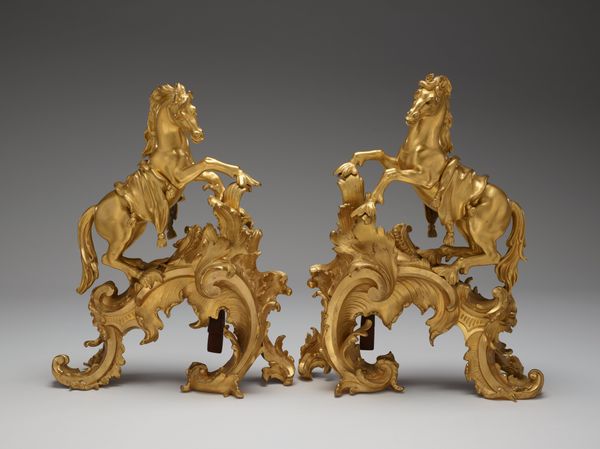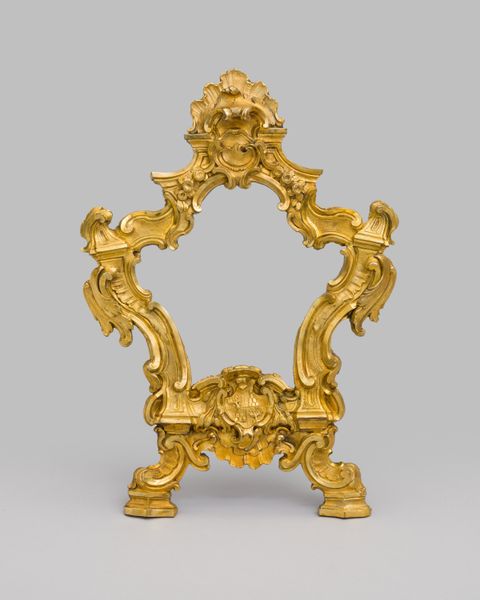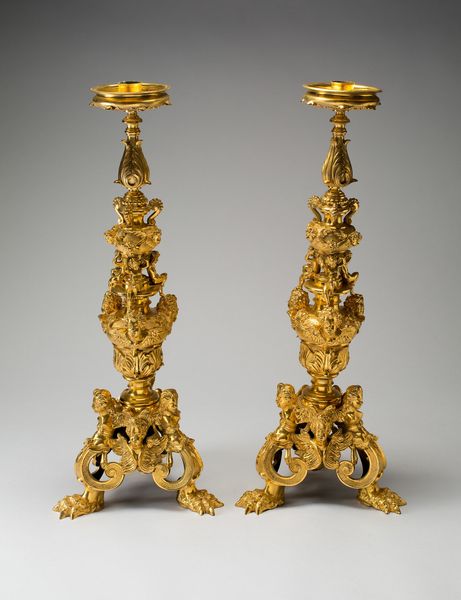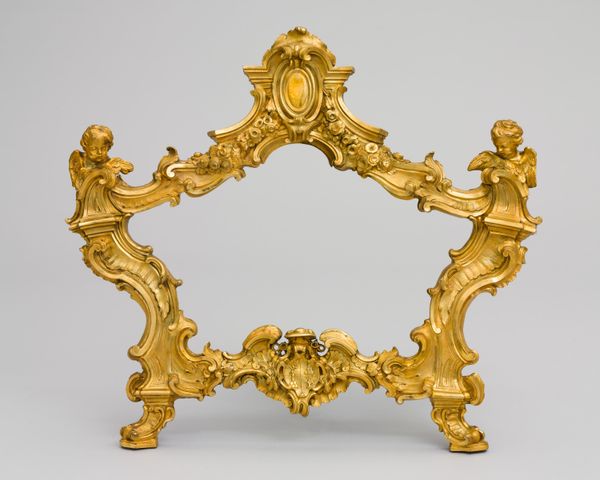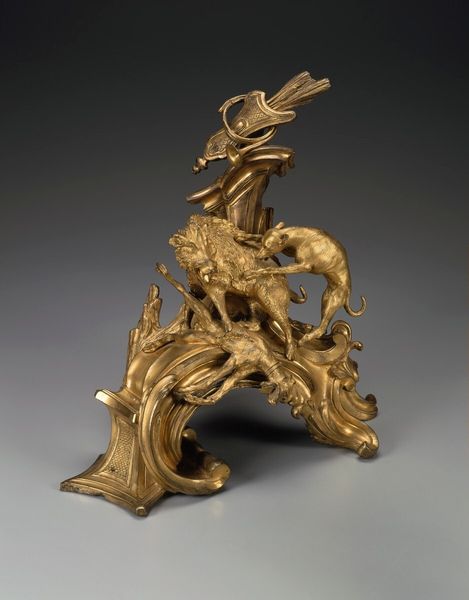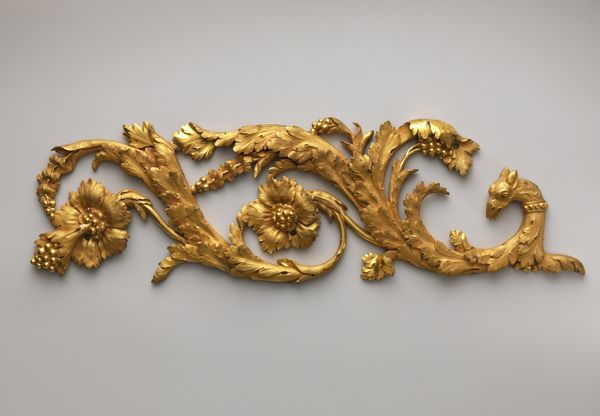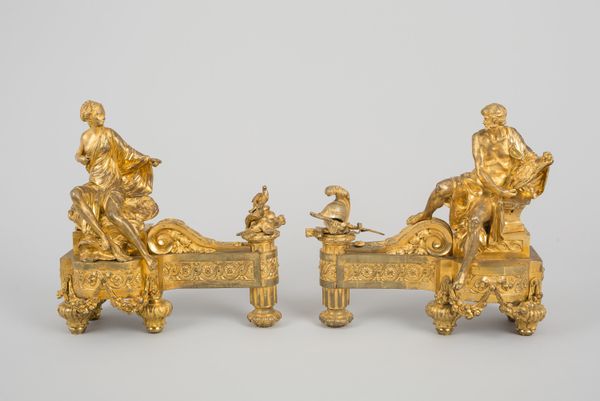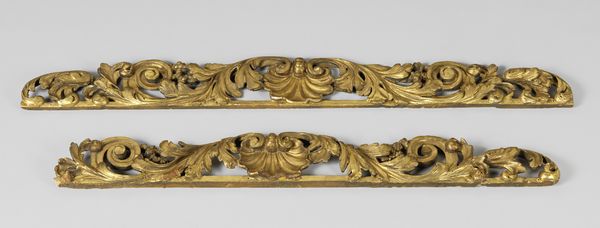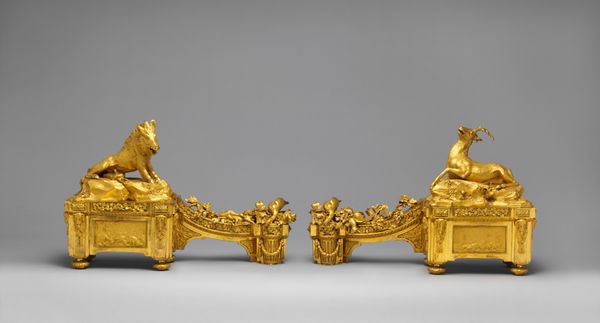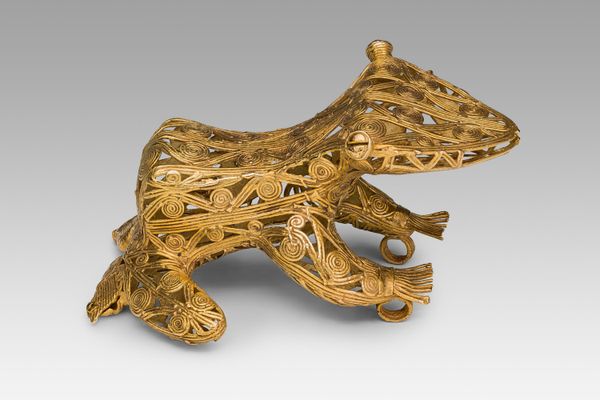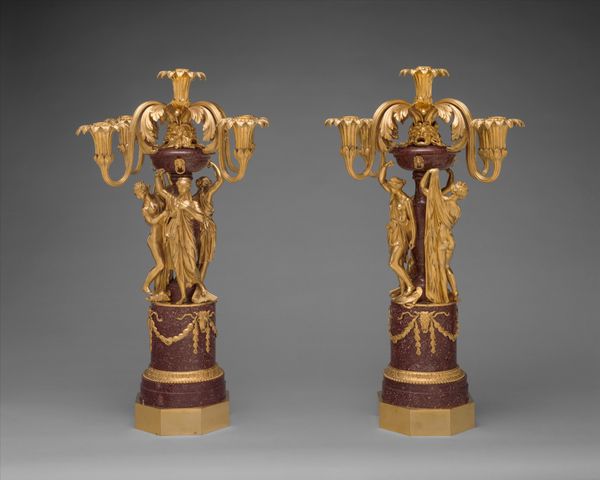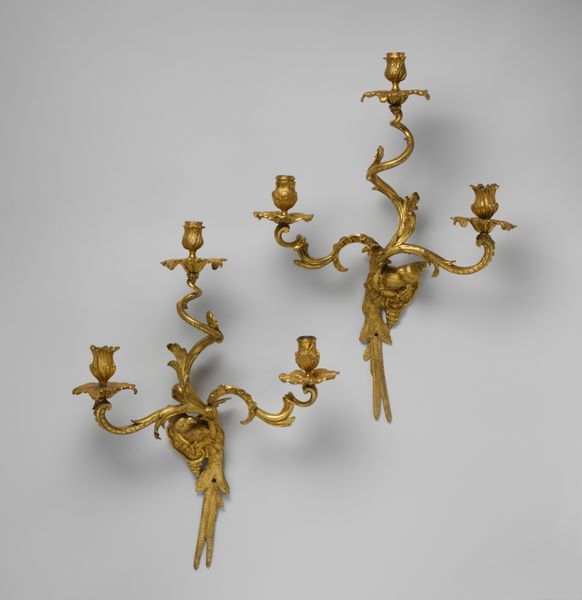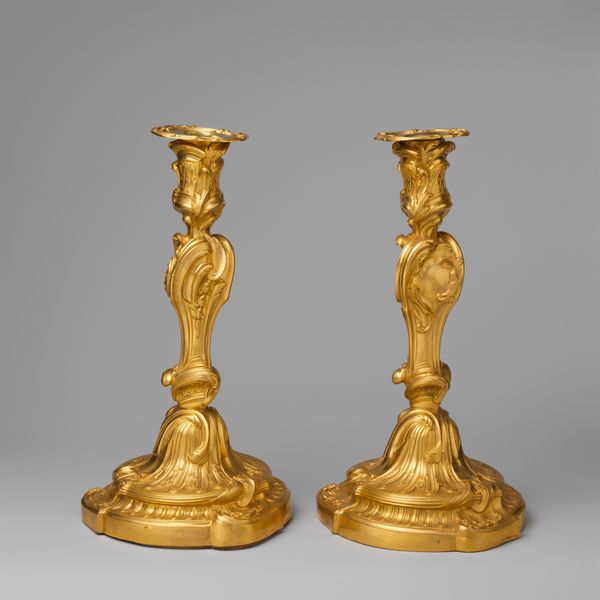
bronze, sculpture
#
animal
#
bronze
#
figuration
#
sculpture
#
rococo
Dimensions: 16 13/16 x 5 x 13 5/8 in. (42.7 x 12.7 x 34.61 cm)
Copyright: Public Domain
Curator: Before us, we have a pair of bronze chenets—also known as fire dogs—entitled -Chevaux Marin- (Seahorse), crafted anonymously around 1745-1750. They belong to the collection of the Minneapolis Institute of Art. Editor: The immediate impression is… opulent! The twisting forms practically vibrate. The gleaming, smooth surfaces juxtapose so strikingly with the intricate detailing of each form. Curator: Absolutely. Consider the dynamism inherent in their design. Each chenet features a rearing horse emerging from a swirl of stylized foliage. Notice how the composition invites the gaze to trace these upward sweeping curves from base to the crest of the horse’s mane. The surface articulation is quite precise. Editor: The horse has forever been entwined with power, virility, and even divinity across many cultures. The choice to portray these particular animals strikes me as fascinating. These aren't just horses; the "marin" suggests an allegorical fusion with the sea. In mythological terms, they allude to the potency and abundance of Neptune’s realm, wouldn’t you agree? Curator: I do. Further analysis reveals the masterful play of Rococo conventions at work. See how light reflects across each undulation of the bronze surface, enlivening its visual character, but also consider that the piece as a whole exemplifies asymmetry. A principle and prime motif within Rococo visual culture and design. Editor: That dynamism, that “visual vibration”, underscores the inherent vitality they seem to represent! This era elevated the sensual experience. We cannot forget these once flanked a hearth. Their radiant gleam mimicking the lively flicker of flame. They transform even the most domestic setting into a theatrical space… a personal theatre for status and refinement. Curator: Indeed. Looking at the interplay of light and shadow, the carefully modulated forms... the artist, despite their anonymity, truly mastered their medium. Editor: Ultimately, these bronze figures reflect how powerful, visual symbolism, intertwined with masterful artistry, elevated these useful domestic objects into signifiers of affluence. A reminder of art's potential to transmute the everyday into something evocative and sublime.
Comments
minneapolisinstituteofart almost 2 years ago
⋮
These andirons (firedogs) are decorated with sea-horses, which were sculpted as thoroughbred steeds, their hooves replaced with fins. The fact that sea-horses, which live in the water, are shown on fireplace equipment, refers to the ancient Greek theory that the cosmos is comprised of four, antithetical elements: fire, water, earth and air. Decorating a fireplace with sea-horses, symbols of water, would have been considered a clever juxtaposition. The concept of the four elements continued to be very much en vogue in France in the 18th century – at the same time, when science abandoned the concept, and the great chemist Antoine Lavoisier (1743-1794) paved the way for the modern periodic table of elements in his Méthode de nomenclature chimique (1787).
Join the conversation
Join millions of artists and users on Artera today and experience the ultimate creative platform.
